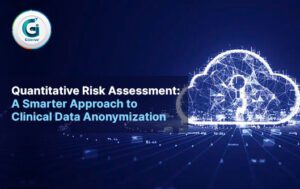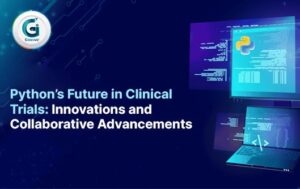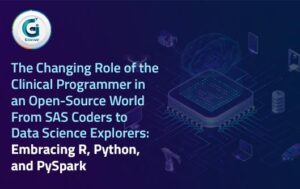The rise of differential privacy is a significant development in the field of data privacy, especially in the age of big data. With the increasing digitization of our lives and the proliferation of data-driven technologies, preserving privacy has become a critical concern.
Differential privacy offers a framework and a set of techniques to address these concerns by allowing the analysis of large datasets while protecting the privacy of individuals. This has also led to the development of new algorithms and techniques that can provide privacy guarantees while preserving data utility. Researchers continue to explore and refine these techniques to enhance their practicality and applicability in real-world scenarios.
Differential privacy has gained significant attention and adoption in recent years, driven by the need to balance data analysis and privacy protection. It has been embraced by both academia and industry, including major tech companies and government organizations. For example, Apple has incorporated differential privacy into its data collection practices protecting user privacy while still gaining insights from user data.
Differential privacy is a concept that aims to strike a balance between data utility and privacy preservation. It provides a mathematical definition and a rigorous framework for quantifying the privacy guarantees of data analysis algorithms. The main idea behind differential privacy is to add a controlled amount of noise or randomness to the output of an algorithm to prevent the identification of specific individuals in the dataset.
The core principle of differential privacy is that the presence or absence of any individual’s data should not significantly affect the results of a query or analysis. In other words, the output of a differentially private algorithm should be almost indistinguishable, regardless of whether an individual’s data is included or excluded from the dataset.
To achieve differential privacy, various techniques are employed. One common approach is to introduce random noise into the data before performing computations. This noise makes it difficult to determine the specific contribution of any individual’s data, ensuring privacy. Another technique involves carefully controlling the release of aggregate statistical information to prevent the disclosure of sensitive details.
Differential privacy techniques like K-anonymity, L-diversity, and T-closeness
In the realm of data anonymization, techniques such as K-anonymity, L-diversity, and T-closeness have emerged as powerful tools to protect privacy and mitigate the risk of re-identification. These concepts go beyond traditional anonymization methods, providing enhanced guarantees of privacy preservation. In this blog post, we delve into the principles and applications of K-anonymity, L-diversity, and T-closeness, exploring how they strengthen data anonymization practices.
1.K-Anonymity:
- K-anonymity, a privacy model commonly applied to protect the data subjects’ privacy in data sharing scenarios, and the guarantees that k-anonymity can provide when used to anonymize data. In many privacy-preserving systems, the end goal is anonymity for the data subjects. Anonymity when taken at face value just means to be nameless, but a closer look makes it clear very quickly that only removing names from a dataset is not sufficient to achieve anonymization. Anonymized data can be re-identified by linking data with another dataset. The data may include pieces of information that are not themselves unique identifiers, but can become identifying when combined with other datasets, these are known as quasi-identifiers. Each released record should be indistinguishable from at least (k-1) others on its QI attributes.
- Description of the generalization and suppression techniques used to achieve K-anonymity.
- Examples of K-anonymity in action, highlighting its effectiveness in preventing identity disclosure.
- There are two common method to achieve K-anonymity i:e suppression and generalization.
2. L-Diversity:
- Introduction to L-diversity, a refinement of K-anonymity that aims to protect against attribute disclosure.
- The l-diversity model adds the promotion of intra-group diversity for sensitive values in the anonymization mechanism.
- Discussion of practical techniques, such as adding noise or introducing fake records, to achieve L-diversity and preserve privacy.
3. T-Closeness:
- An equivalence class is said to have t-closeness if the distance between the distribution of a sensitive attribute in this class and the distribution of the attribute in the whole table is no more than a threshold t. A table is said to have t-closeness if all equivalence classes have t-closeness.
- Description of the diversity-sensitive distance metric used in T-closeness to assess the closeness of attribute distributions.
- Examples illustrating T-closeness and its impact on preserving privacy in different scenarios.
Conclusion
As data privacy becomes a critical concern, understanding and implementing advanced anonymization techniques like K-anonymity, L-diversity, and T-closeness is essential. These concepts provide robust privacy guarantees by preventing identity disclosure and attribute inference. By incorporating these techniques into data anonymization workflows, organizations can confidently share and analyse data while protecting the privacy of individuals. Remember, selecting the appropriate technique depends on the specific requirements and context of the data being anonymized. Stay informed, adapt to evolving privacy challenges, and ensure responsible data handling practices to safeguard privacy in the digital age.
However, it’s worth noting that differential privacy is not a one-size-fits-all solution, and its implementation requires careful consideration and expertise. The level of privacy protection and data utility can be adjusted by tuning parameters, but there is an inherent trade-off between privacy and utility. Striking the right balance is crucial in different applications and contexts.
By Ramandeep Dhami, Business Manager


























